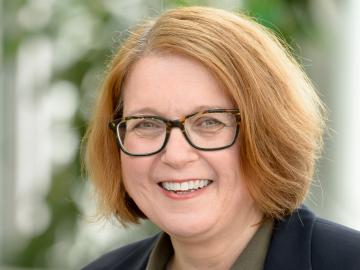
Filter News
Area of Research
- Advanced Manufacturing (7)
- Biology and Environment (37)
- Building Technologies (1)
- Clean Energy (69)
- Computational Biology (1)
- Computational Engineering (2)
- Computer Science (4)
- Electricity and Smart Grid (1)
- Fusion and Fission (14)
- Fusion Energy (1)
- Isotopes (12)
- Materials (15)
- Materials for Computing (18)
- Mathematics (1)
- National Security (7)
- Neutron Science (16)
- Nuclear Science and Technology (1)
- Quantum information Science (3)
- Sensors and Controls (1)
- Supercomputing (21)
- Transportation Systems (1)
Date
News Topics
- 3-D Printing/Advanced Manufacturing (26)
- Advanced Reactors (2)
- Artificial Intelligence (7)
- Big Data (5)
- Bioenergy (13)
- Biology (23)
- Biomedical (10)
- Biotechnology (5)
- Buildings (13)
- Chemical Sciences (7)
- Clean Water (8)
- Climate Change (11)
- Composites (6)
- Computer Science (30)
- Coronavirus (10)
- Critical Materials (4)
- Cybersecurity (5)
- Decarbonization (7)
- Energy Storage (22)
- Environment (39)
- Exascale Computing (2)
- Frontier (4)
- Fusion (8)
- Grid (11)
- High-Performance Computing (19)
- Isotopes (12)
- ITER (4)
- Machine Learning (1)
- Materials (32)
- Materials Science (22)
- Mathematics (1)
- Mercury (3)
- Microscopy (10)
- Nanotechnology (10)
- National Security (7)
- Net Zero (1)
- Neutron Science (18)
- Nuclear Energy (6)
- Physics (3)
- Polymers (5)
- Quantum Computing (5)
- Quantum Science (12)
- Security (3)
- Space Exploration (4)
- Statistics (1)
- Summit (9)
- Sustainable Energy (35)
- Transportation (21)
Media Contacts

A rare isotope in high demand for treating cancer is now more available to pharmaceutical companies developing and testing new drugs.

Oak Ridge National Laboratory was among an international team, led by Lawrence Livermore National Laboratory, who synthesized 108 elevated carbon dioxide, or CO2, experiments performed in various ecosystems to find out how much carbon is

When Kashif Nawaz looks at a satellite map of the U.S., he sees millions of buildings that could hold a potential solution for the capture of carbon dioxide, a plentiful gas that can be harmful when excessive amounts are released into the atmosphere, raising the Earth’s temperature.

Scientists have found new, unexpected behaviors when SARS-CoV-2 – the virus that causes COVID-19 – encounters drugs known as inhibitors, which bind to certain components of the virus and block its ability to reproduce.

Cynthia Jenks has been selected associate laboratory director for the Physical Sciences Directorate at the Department of Energy’s Oak Ridge National Laboratory. She joins the lab April 19.

New data distributed through NASA’s Oak Ridge National Laboratory Distributed Active Archive Center, or ORNL DAAC, provide an unprecedented picture of plants’ carbon storage capacity around the globe.

UT-Battelle is supporting high-impact, community-focused programs, managed by 28 local nonprofits, with grants totaling more than $200,000, which will fund multiple outreach efforts from take-home STEM education kits for students to growing STEM Scouts to outfitting a mobile robotics shop.

Nuclear physicist Caroline Nesaraja of the Department of Energy’s Oak Ridge National Laboratory evaluates nuclear data vital to applied and basic sciences.

Researchers at Oak Ridge National Laboratory have identified a statistical relationship between the growth of cities and the spread of paved surfaces like roads and sidewalks. These impervious surfaces impede the flow of water into the ground, affecting the water cycle and, by extension, the climate.

Scientists at Oak Ridge National Laboratory successfully demonstrated a technique to heal dendrites that formed in a solid electrolyte, resolving an issue that can hamper the performance of high energy-density, solid-state batteries.


